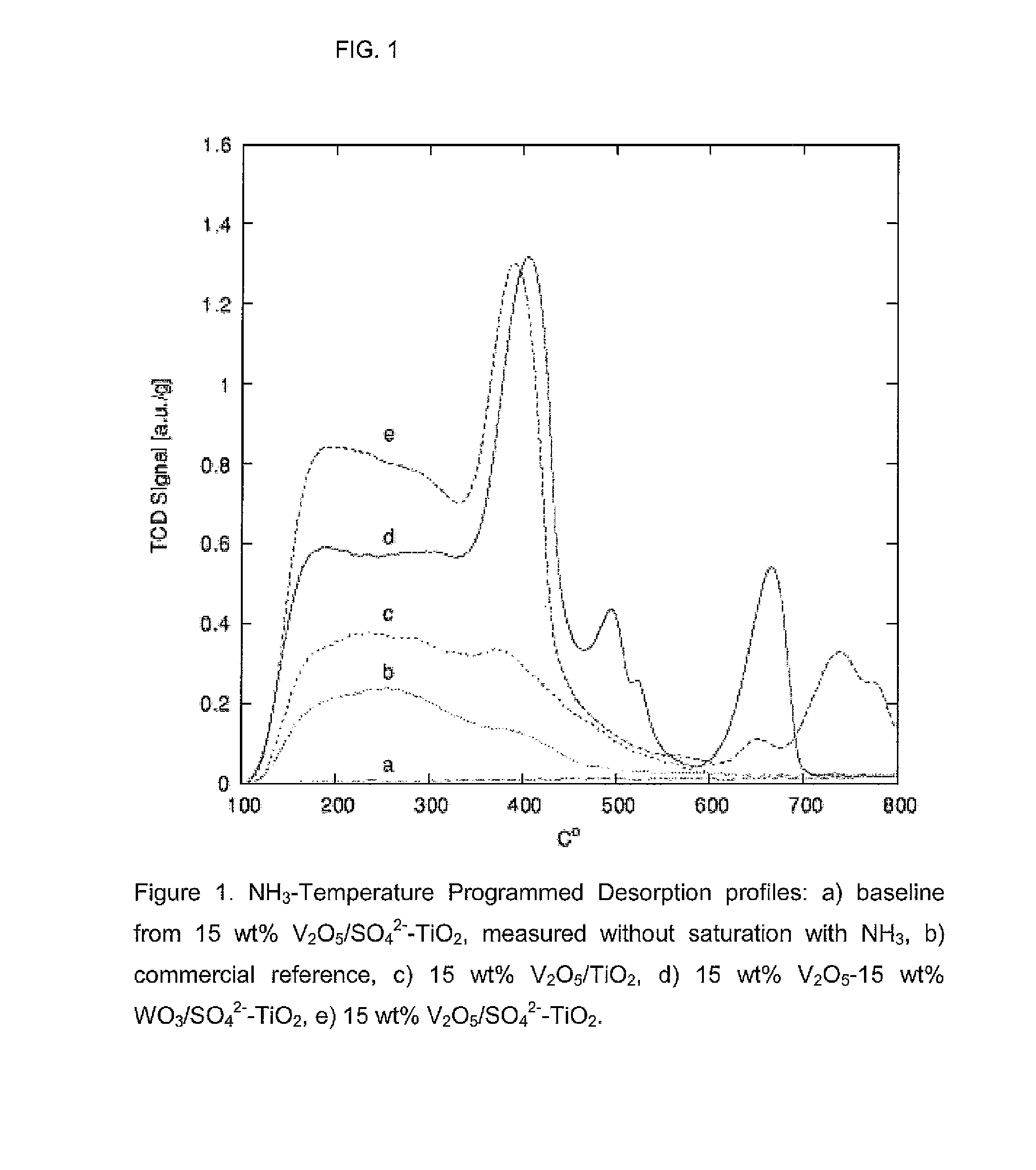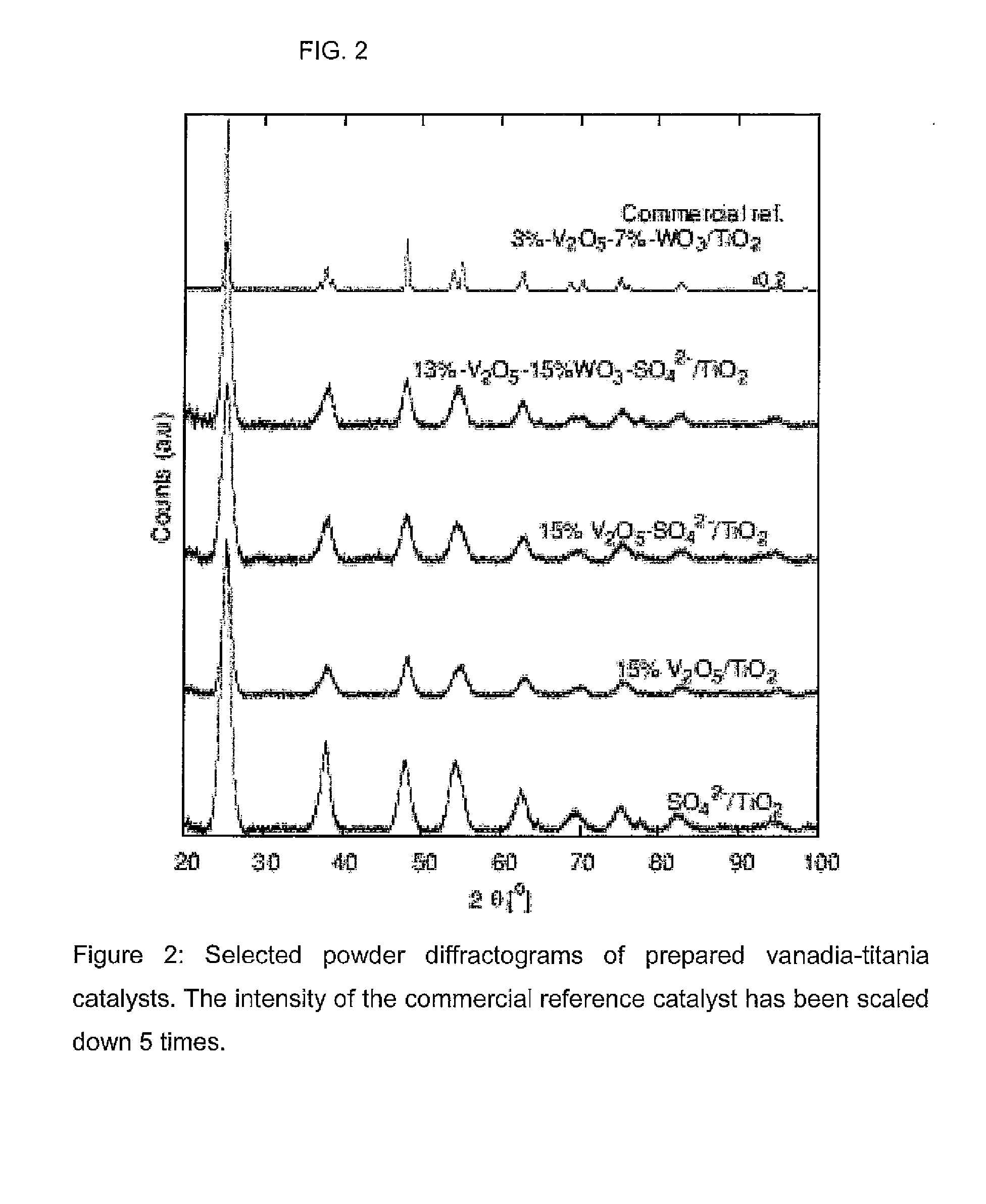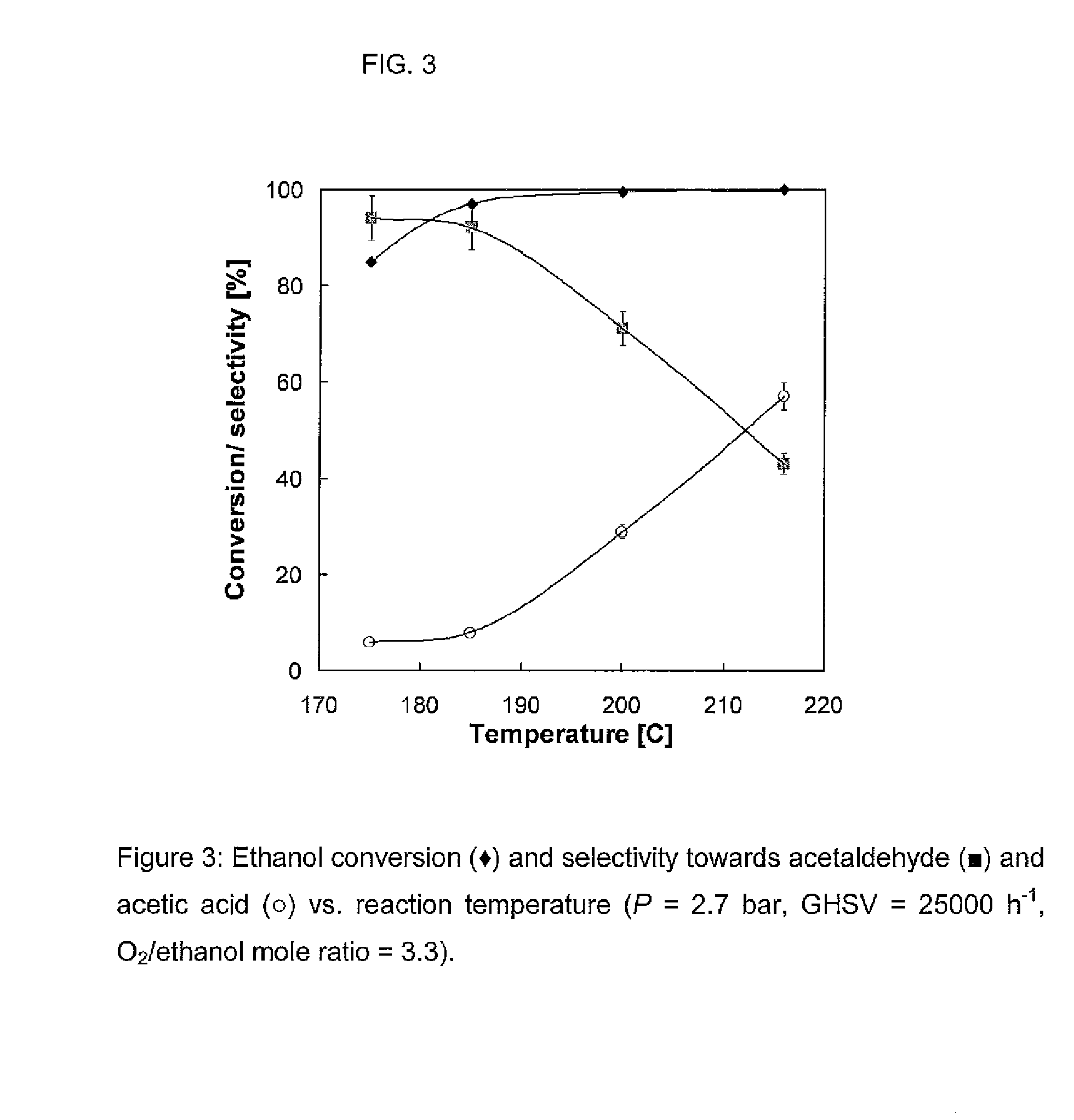Nanoparticular metal oxide/anatase catalysts
a technology of metal oxide and anatase, which is applied in the direction of nitrogen compounds, engine components, climate sustainability, etc., can solve the problems of limited activity of industrial vox/tiosub>2/sub>-based scr catalysts, inability to produce enough bioethanol to replace gasoline, and high energy consumption. , to achieve the effect of high loading
- Summary
- Abstract
- Description
- Claims
- Application Information
AI Technical Summary
Benefits of technology
Problems solved by technology
Method used
Image
Examples
example 1
Sulfated Catalyst
Preparation of 15 wt % V2O5 / SO42−—TiO2 Catalyst
[0118]A solution of 3.10 g NH4NO3 (38.7 mmol) in 4.40 g deionized water was added dropwise to a stirred, ice-cooled solution containing 4.000 g Ti(i-PrO)4 (14.1 mmol), 0.432 g VO(EtO)3 (2.1 mmol), 1.90 g glacial acetic acid (31.6 mmol) and 20.0 g ethanol. The resulting solution was then allowed to gelatinize during aging for 48 hours with stirring; whereafter 0.15 ml of 96 wt % sulphuric acid was added. After additionally 5 hours of stirring the solvent was evaporated in vacuo (70° C., 1 mbar, 1 hour). The evaporation residue was calcined at 380° C. for 4 hours to afford the final catalyst material.
example 2
Non-Sulfated Catalyst
Preparation of 15 wt % V2O5 / TiO2 Catalyst
[0119]A solution of 2.90 g NH4Cl (54.2 mmol) in 6.16 g deionized water was added dropwise to a stirred, ice-cooled solution containing 5.60 g Ti(i-PrO)4 (19.7 mmol), 0.603 g VO(EtO)3 (2.94 mmol), 2.66 g glacial acetic acid (44.1 mmol) and 28.0 g ethanol. The resulting solution was then allowed to form a gel during aging for 48 hours with stirring. The solvent was evaporated at reduced pressure (50° C., 20 mbar, 1 hour). The sample was outgassed in vacuum (<1 mbar) for 100 hours at 50° C. in order to remove remains of acetic acid. The evaporation residue was calcined at 380° C. for 4 hours to afford the final catalyst material.
example 3
Sulfated Catalyst
Preparation of 4% wt. CuO / SO42−—TiO2
[0120]A solution of 1.40 g NH4Cl (26.2 mmol) in 4 mL deionized water was added dropwise to a stirred, ice-cooled solution of 3.70 g Ti(i-PrO)4 (13.0 mmol), 0.107g g copper(II) acetate monohydrate (0.49 mmol), and 2.43 g glacial acetic acid (40.5 mmol) in 10 mL abs. ethanol. After addition of the aqueous solution, a yellowish gel was formed, which subsequently was aged 20 h under stirring. 5 drops of concentrated H2SO4 was added, before ethanol, liberated propanol, acetic acid, and excess water were removed under reduced pressure (0.2 mbar, 70-100° C.). Finally, the material was calcined (400° C., 6 h) in an air stream (300 mL
PUM
| Property | Measurement | Unit |
|---|---|---|
| particle size | aaaaa | aaaaa |
| temperatures | aaaaa | aaaaa |
| pressures | aaaaa | aaaaa |
Abstract
Description
Claims
Application Information
 Login to View More
Login to View More - R&D
- Intellectual Property
- Life Sciences
- Materials
- Tech Scout
- Unparalleled Data Quality
- Higher Quality Content
- 60% Fewer Hallucinations
Browse by: Latest US Patents, China's latest patents, Technical Efficacy Thesaurus, Application Domain, Technology Topic, Popular Technical Reports.
© 2025 PatSnap. All rights reserved.Legal|Privacy policy|Modern Slavery Act Transparency Statement|Sitemap|About US| Contact US: help@patsnap.com



